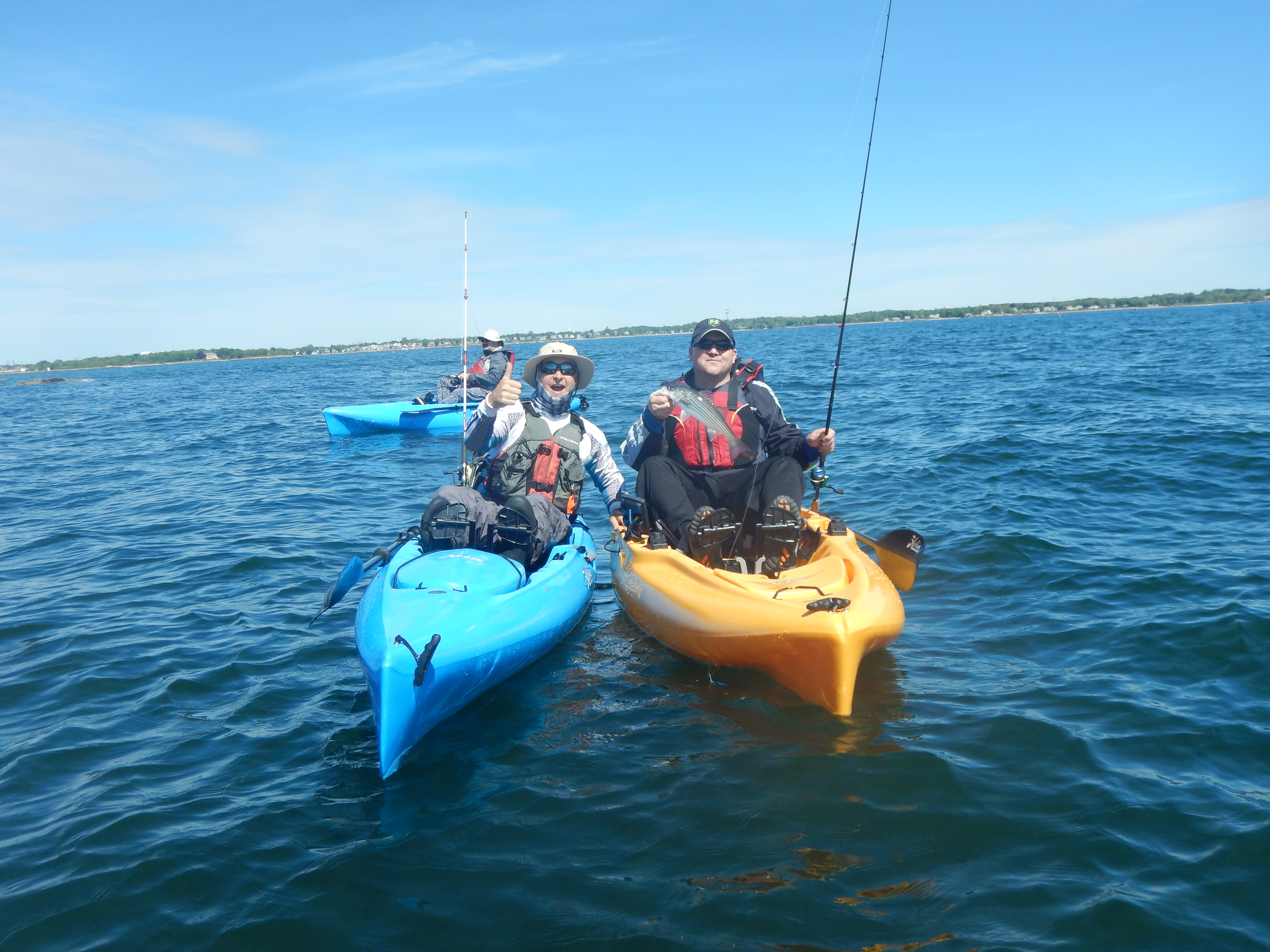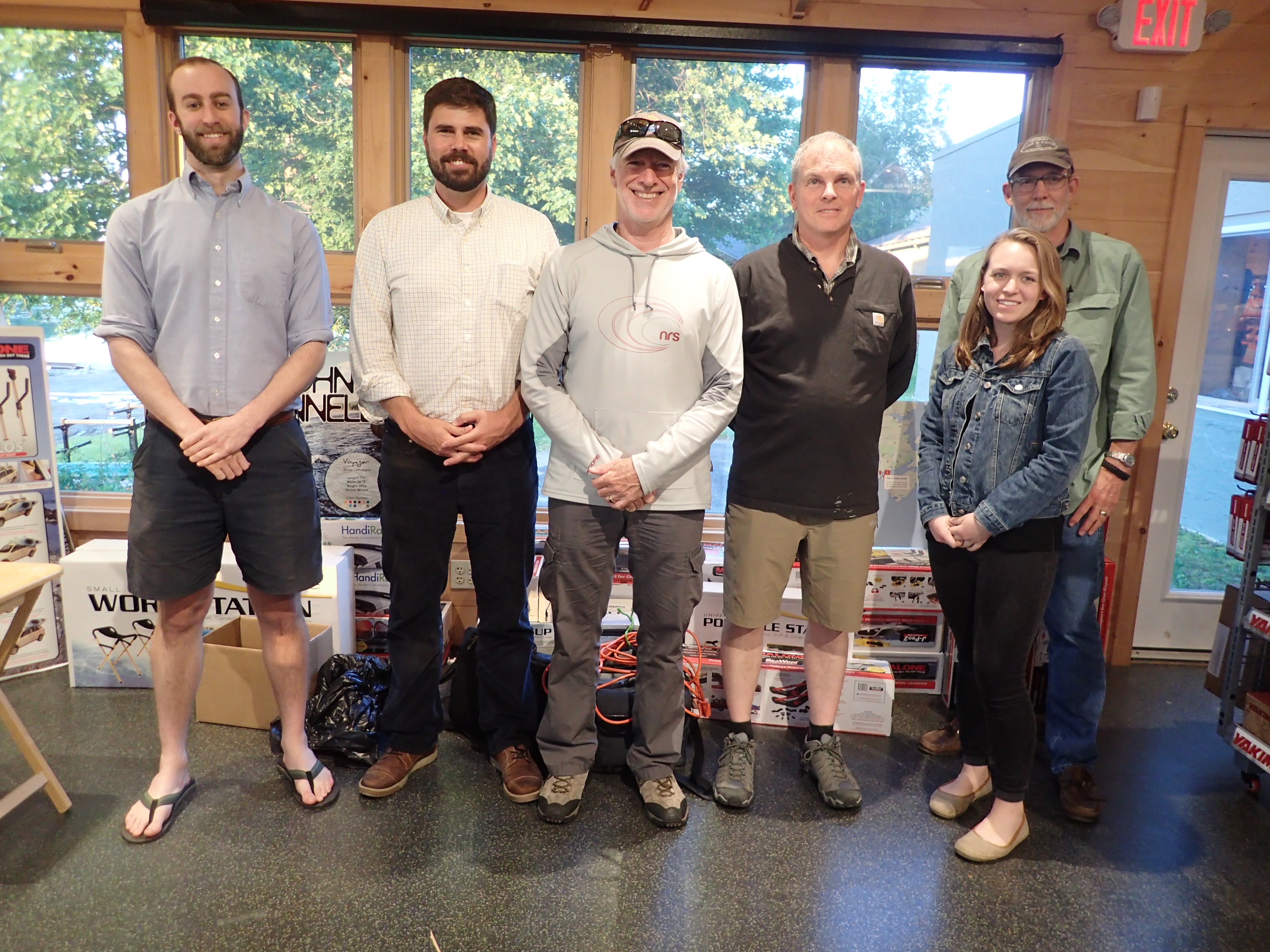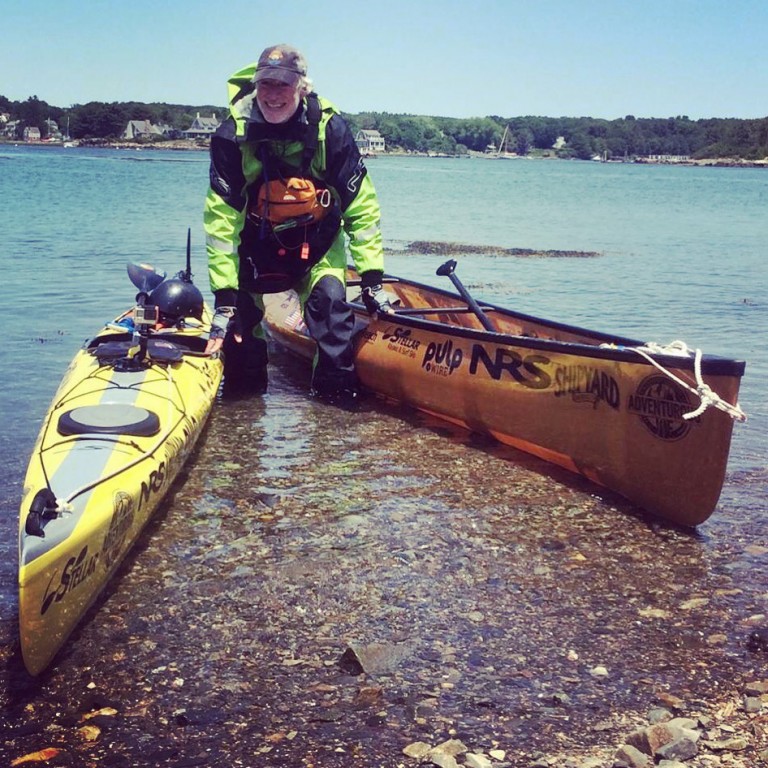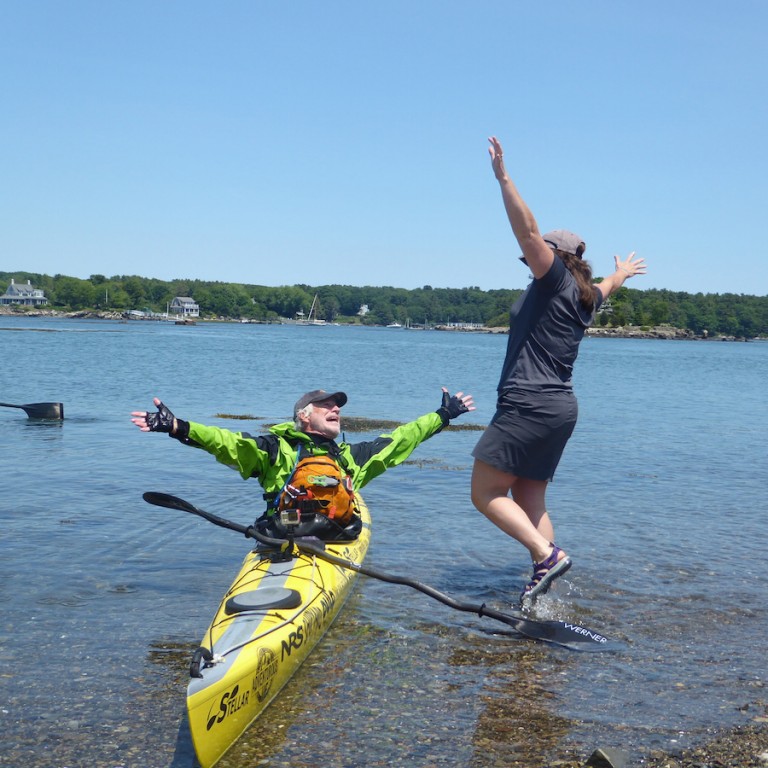 In late May, I head over to the Little Harbor Boathouse in Marblehead, Mass., to take part in a Guided Hobie Kayak Fishing Excursion. It would be a three-hour fishing program with use of a Hobie Kayak, fishing gear, and know-how from three very friendly and experienced guides: Jesse Minoski, Joe Gugino (see above photo on left), and Mike Marquis.
In late May, I head over to the Little Harbor Boathouse in Marblehead, Mass., to take part in a Guided Hobie Kayak Fishing Excursion. It would be a three-hour fishing program with use of a Hobie Kayak, fishing gear, and know-how from three very friendly and experienced guides: Jesse Minoski, Joe Gugino (see above photo on left), and Mike Marquis.
Our prey? The striped bass which had recently moved north from their southern vacations to spend the long summer feeding in New England waters. May and June is prime fishing season for this species.
The rocky shoreline around Marblehead is ideal striped bass territory, Hobie Team member Minoski says (he took the photo), and the Little Harbor Boathouse’s “hidden gem” location means you don’t have to go more than a half mile from the launch to fish and you duck out of the wind behind Crowninshield and Gerry’s Islands.
Maryellen Auger, owner of Little Harbor Boathouse, has a Hobie Revolution 11 waiting for me. It’s an ideal boat size for women, she notes. Sleek and lively, the Revolution uses a pedal system to propel forward (a paddle is attached by bungee chord on the side if you need it). The kayak comes in three lengths, 11, 13 and 16 feet, increasing in speed with the hull length. Conveniences include a molded-in rod holder, multiple hatches, lots of on-deck storage, and a “hyper adjustable” Vantage CT seat with webbing, that is so comfortable you could sit out there all day and cast a line. The seat sits off the floor and keeps you dry and is removable to turn into a beach chair.
I “power-pedal” my way out through Little Harbor behind Crowninshield and catch up with six eager clients and three helpful guides.
A couple of the clients catch fish on the dropping tide and release them. I’m not so lucky, but I can tell you how wonderful it is to sit out on the ocean in a comfy seat on a fresh spring day, casting a line, enjoying the beautiful surroundings, camaraderie, and communing with a species that obviously knows the most of any of us about the water dynamics and food below. All and all, I had a very good time and highly recommend it, especially for someone new to kayak angling such as myself.
Little Harbor Boathouse will hold two more Hobie First Cast Kayak Fishing Meetups this season. The dates are: Saturday, June 17, 8:30-11:30 (good Father’s Day outing) and Sunday, June 25, 10 a.m.-1 p.m.
Details and 24/7 on-line reservation to participate in Hobie First Cast Guided Kayak Fishing Excursions, Private Guides, and Hobie hands-free Kayak rentals visit:
http://littleharborboathouse.com/kayak-fishing/events
For ongoing fishing guiding service out of Little Harbor Boathouse – the blues come out in July – with 2017 Hobie Fishing Team Members Joe Gugino and Jesse Minoski: www.whyknotfishing.com
– Tamsin Venn



